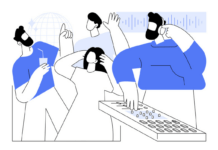It’s more than just nodding your head and waiting for your turn.
I am sure many of you are saying to yourself, “Of course, I listen to my clients,” but do you really? Or are you like the vast majority of us, listening while taking notice of what else is happening around you, or impatiently waiting for a break in the conversation so you can tell them what you think about whatever it is they are saying or, worse, changing the subject to something you want to talk about? How much do we really hear of what people say?
One of the best compliments someone can give you is saying you are a good listener. People are attracted to and like people who actively listen; and people buy from people they like. The important word in the last sentence is “actively,” as in not just passively listening, but taking part in the conversation even though you may not be saying something. Active listening is tough and you need to train yourself to listen and absorb everything the person is saying.
Listening carefully to a prospective client allows you to develop a conversation, an exchange of ideas surrounding how they feel about what you are saying, or selling. It doesn’t mean saying nothing; an effective two-way conversation is usually one where you have spoken far less than your client and any interjections you have made have been to encourage conversation around an outcome that benefits both parties.
Active listening is not all about what you say, or what your clients say. Consider the experts at active listening — psychiatrists; these are people trained to listen to their patients. They study the body language of their patients; they lean forward, nod, make comforting sounds, write things down at appropriate moments, all the while guiding the conversation with short interjections aimed at encouraging the patient to divulge problems, needs, wants, and desires.
{advertisement} Psychiatrists are experts at the pause (those few seconds after a patient stops talking); they wait for several seconds because they know that the most difficult and important things to say often need the encouragement of silence to be revealed. This is true in sales and customer service, where, if we just let the silence linger for a few seconds, we will likely either get the sale (the difficult commitment), or uncover that all-important hidden objection that is preventing us from closing the sale.
The value of listening to your clients in a focused, attentive manner is that it allows you to see the world as they see it, along with their needs, wants, desires, fears, and concerns. It also demonstrates respect and goes a long way to building strong, long-term relationships. Developing a deeper understanding of your client is exceptionally powerful and will take your relationship with him or her to a whole new level.
From a business perspective, active listening allows you to gather strategic and tactical information. The more people talk, the more they divulge. Active listening will help you access those honest feelings that are so important to hear.
Customer surveys have become prevalent in the last few years, but don’t make the mistake of seeing surveys as listening. Spend time physically listening to your clients and you will make more sales, learn more about what they really think about your company and what it sells, and avoid having to replace lost customers.
Experts say it takes 21 days to break a habit, so set yourself a target of three weeks to turn passive listening into active listening at every opportunity and see the difference it makes in your relationships with your clients
Mike Wicks (mike(at)bluebeetlebooks.com)
ABOUT
Douglas magazine delivers exciting, in-depth features about Victoria, British Columbia’s vibrant business culture — its startups, disrupters and influencers. With its clear-eyed, contemporary take on business, Douglas inspires local leaders with content about how entrepreneurship is changing our city — and our world.



























